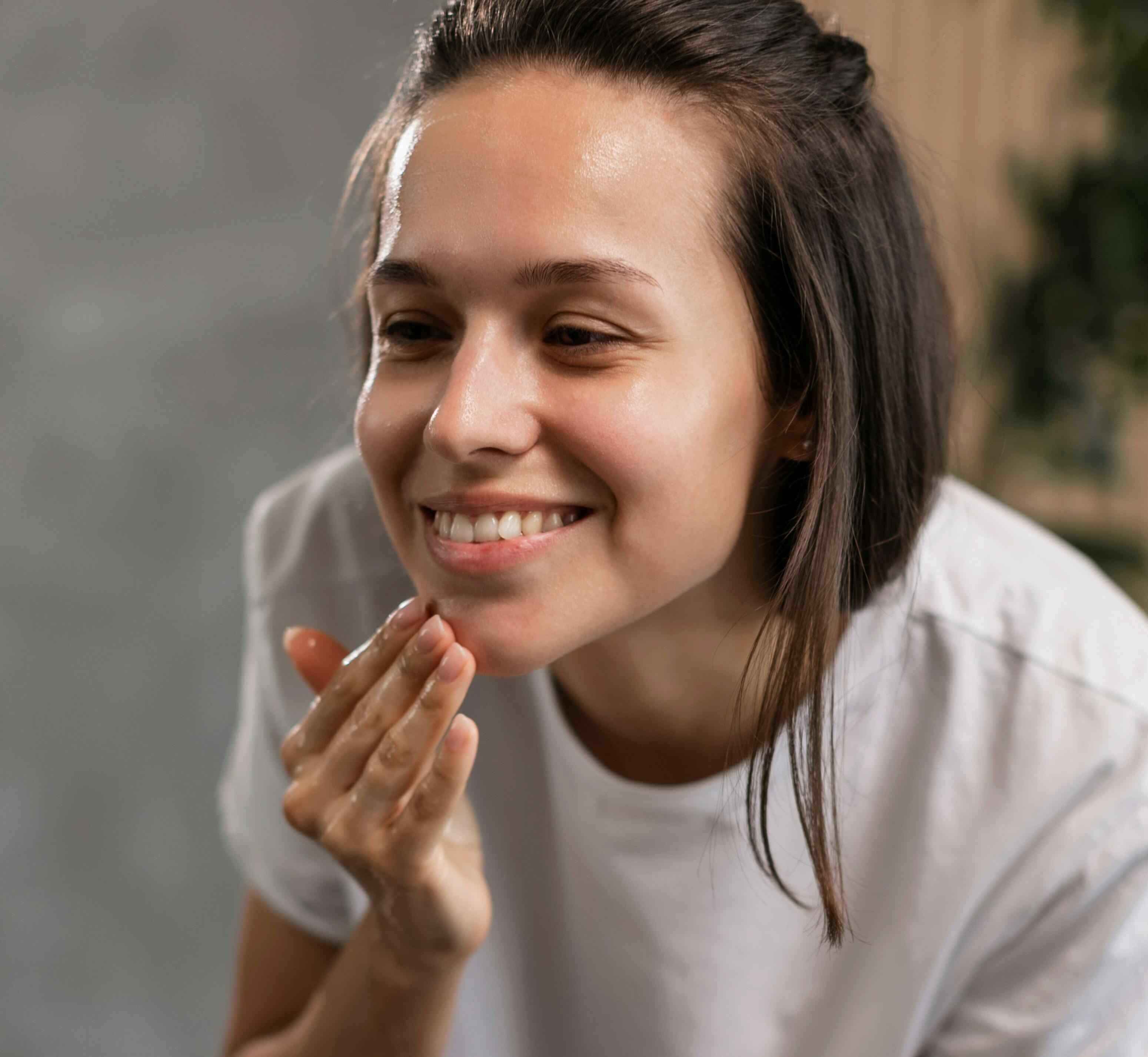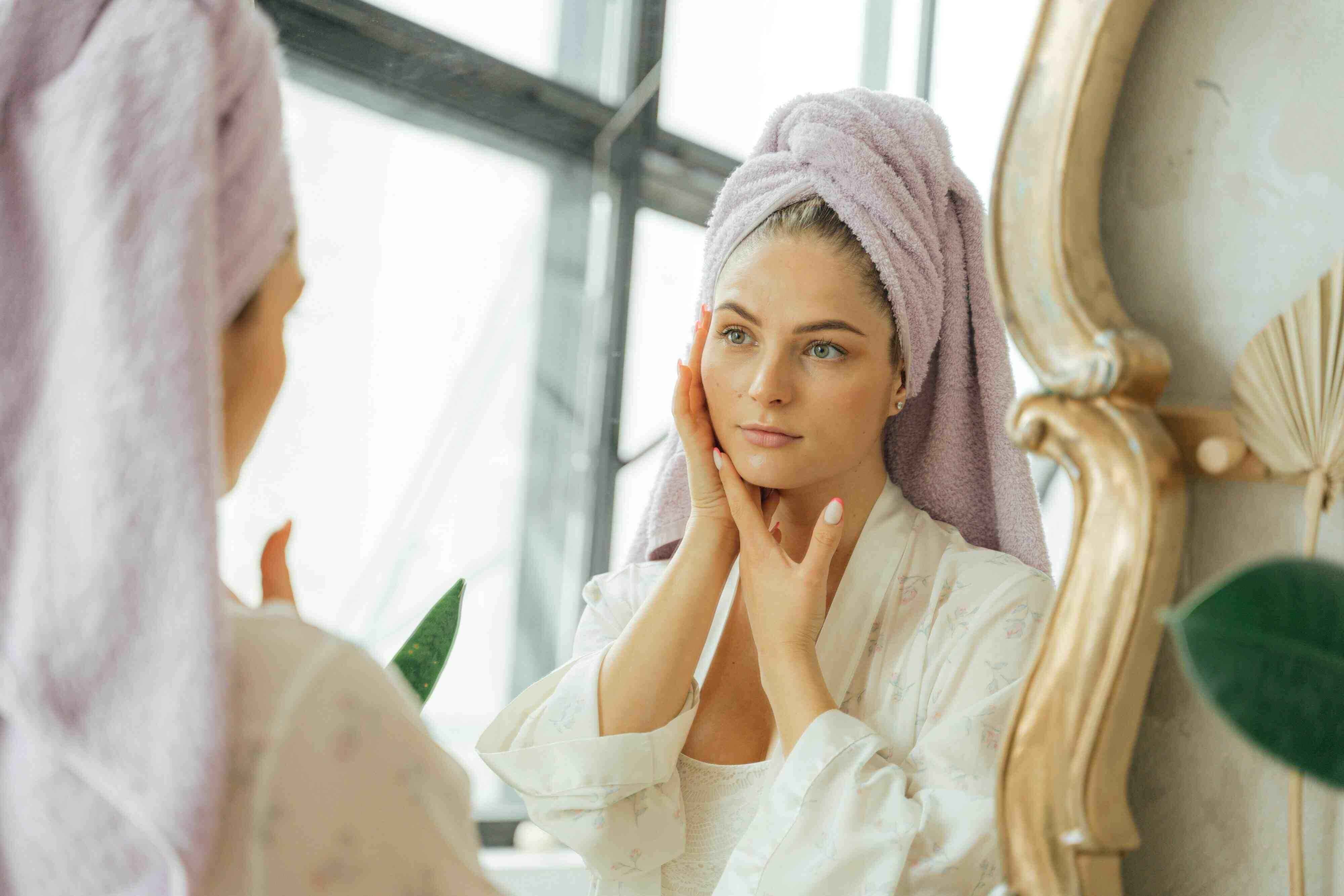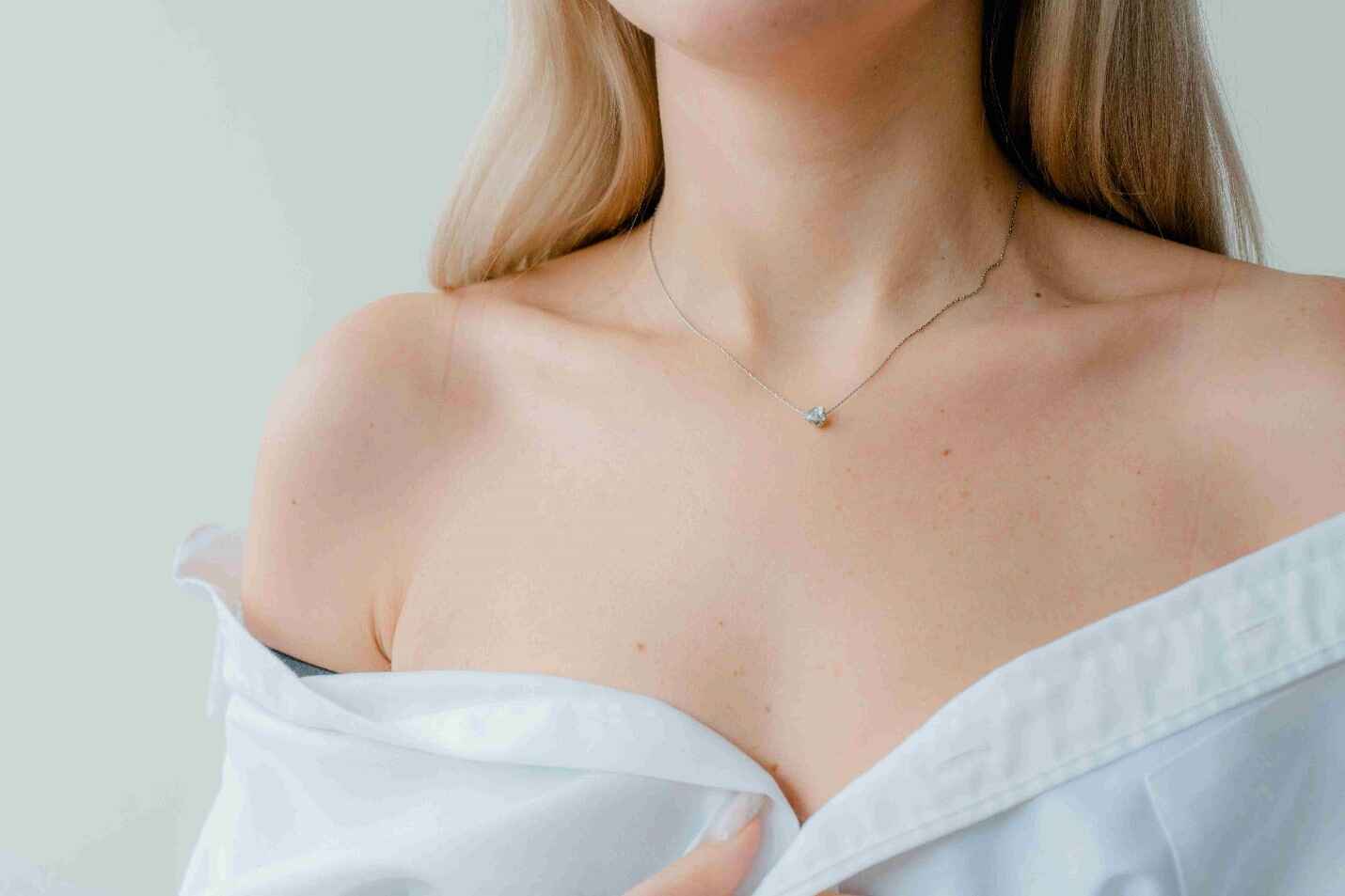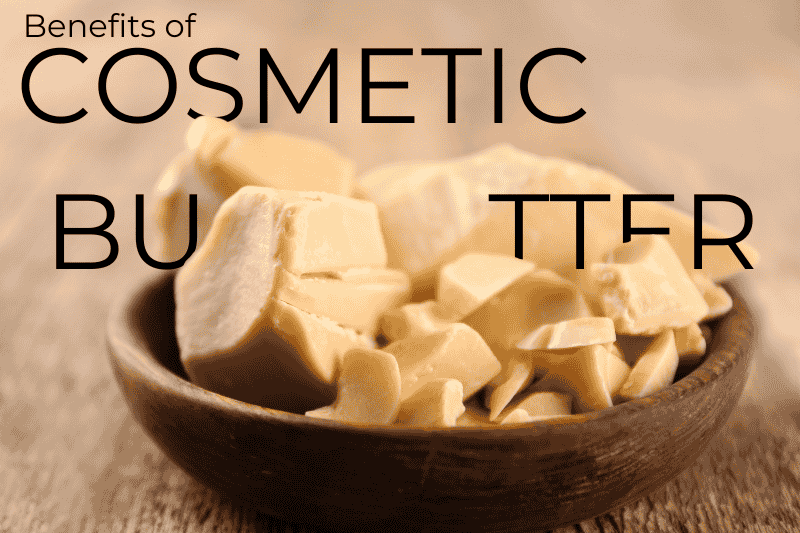Reviewed by: Kacie La
Contents:
- As an After-bath Moisturiser
- As Face Mask or Mixed with other Products
- As Anti-aging Night Cream
- Moisturising Hair Mask
- Stretch Mark-reducing Cream
- Shaving Cream Alternative
Tired of having dry skin or damaged hair? Want to reduce any signs of aging, uneven skin tone, dark spots, or stretch marks?
Target these skin and hair concerns with cosmetic butters!
What is Cosmetic Butter?
This is a plant-based ingredient rich in fatty acids, vitamins, and antioxidants, and is generally used for skin hydration in cosmetic formulations.
This ingredient is often incorporated to create creams, balms, hair care treatments, and lotions.

Benefits of Cosmetic Butters
1. Moisturising
Among the primary benefits of cosmetic butters is to moisturise the skin. They contain high levels of fatty acids that provide and preserve hydration to the skin, making it soft and supple.

2. Anti-aging
One of the most significant benefits of cosmetic butters is its anti-aging properties due to its antioxidant components. These help protect your skin from free radical damage that results in visible signs of aging, such as fine lines and wrinkles.
3. Anti-inflammatory
Its anti-inflammatory properties help soothe skin, making it suitable for irritated, sensitive, or skin types that are prone to acne and breakouts.
4. Cleansing
Most cosmetic butterscontain stearic acid that has cleansing properties, helping eliminate dirt and excess oil from pores.
5. Skin tone enhancement
The emollient properties of this ingredient can help soften and smooth out rough, uneven areas of your skin, thus improving its texture and appearance.
Common Cosmetic Butters and Their Components
1. Shea butter
Shea butter has a high concentration of fatty acids (oleic, stearic, linoleic, palmitic, and arachidic acids), vitamins (A, E, and F), and antioxidants, known to provide hydrating, soothing, protective, and anti-inflammatory properties to the skin.
Shea butter is non-comedogenic, so it can be used for most skin types, with extra regulation for those with oily skin or highly prone to acne.
Eji, one of our beloved customers, uses shea butter to make body butter and “it feels good on my skin,” she says!
You may choose to use organic unrefined shea butter, which has the highest quality, or opt for the odourless organic refined shea butter.
2. Cocoa butter
Like shea butter, cocoa butter also has high amounts of stearic, oleic, and palmitic acids and antioxidants, this ingredient is highly moisturising and anti-aging.
Using cocoa butter for skin can help refine visible signs of aging and offer a layer of protection against free radicals.

However, using cocoa butter for skin might feel oily because of its thick consistency and is considered moderately to highly comedogenic. It is best for dry skin and extra caution is needed for oily or acne-prone skin.
There are two types of cocoa butter: deodorised and non-deodorised.
Deodorised cocoa butter underwent physical or chemical treatment to reduce its natural aroma so it’s usually the type of cocoa butter for skin care and soapmaking. However, this also reduces the nutritional properties of cocoa butter.
Meanwhile, non-deodorised cocoa is in its unrefined state in pale-yellow color and intense colours, and has retained the rich antioxidants of cacao. You can use this type of cocoa butter for skin if you prefer a cacao aroma or if you don’t plan to add other scents to your formulation.
3. Mango butter
Also contains fatty acids (oleic, stearic, linoleic, and palmitic acids) and is an excellent source of vitamins A and C. These brighten and even out skin tone, while also moisturising the skin
With a moderate comedogenic rating, mango butter is generally safe for most skin types, but regulated use is advised with sensitive, acne-prone, or oily skin.
| Cosmetic Butter | Skin Benefits | Best Skin Type For (Comedogenic Rating) | Distinct Properties | Best Used For |
| Shea Butter |
|
|
|
Can be used for moisturising in skincare and haircare |
| Shea butter (Refined) |
|
Commonly used in skincare for its odourless property, typically in commercial sale | ||
| Cocoa Butter (Deodorised) |
|
|
|
Commonly used for personal care and soapmaking formulations because of its neutral aroma |
| Cocoa Butter (Unrefined) |
|
Can also be used for personal care and soapmaking formulations when there's no need to add other fragrances or if its natural chocolate aroma is desired. | ||
| Mango Butter |
|
|
|
|
Pro tip: If you don’t like the oily feeling when applying butter, such as when using cocoa butter for skin, choose lighter-weight types such as shea butter and mango butter. Or you can add some cosmetic clay or cosmetic-grade rice starch to your formulation.
How to Use Cosmetic Butters for Skincare
Aside from the numerous benefits of cosmetic butters, they can also be used in many ways. You just have to choose and shop for your cosmetic butter of choice and follow these simple steps:
- As an after-bath moisturiser for body and face
For body care: Warm a small scoop of cosmetic butter, such as the highly moisturising shea butter, by rubbing it between your palms, and apply it to dry areas
For the face: Take a small amount and gently massage it into the skin. Control your usage if you have oily or acne-prone skin.

- Used in face masks or mixed with other products
Melt a small amount of butter and mix it with other products or raw ingredients, such as essential oils, serums, and moisturisers. Apply to the face and let it sit for 10-20 minutes before rinsing it off with lukewarm water.
- As an anti-aging night cream
Apply a small amount to the face and neck after cleansing and toning, gently massaging in circular motions to maximise its benefits. The antioxidant benefits of cosmetic butters can help refine your skin, reducing the appearance of aging.
- As a moisturising hair mask
Take a small amount and warm in your hands. Apply it to the tips of your hair or massage into the scalp to provide moisture. Leave for 20 minutes before rinsing it off.
Reminder: Regulate the amount of cosmetic butter you use, especially for oily hair, to avoid weighing it down. Fortunately, there are lightweight options, such as shea butter and mango butter.
- As a stretch mark-reducing cream
Generously apply cocoa, shea, mango, butter to areas with stretchmarks, massaging the butter in specific areas. The hydrating and brightening benefits of cosmetic butters can help reduce the appearance of stretch marks.
- Additional use: As a shaving cream alternative
Although not really for skincare, but cosmetic butters can also work as shaving cream alternatives. Apply a thin layer to the skin before shaving for a smooth, irritation-free, and moisturising shaving experience.
FAQs
Are cosmetic butters safe for acne-prone and oily skin?
Yes, as long as you regulate the amount of cosmetic butter you use and follow these general rules:
- Choose a non-comedogenic butter or one with a low comedogenic rating. When using a type with a thicker consistency, such as cocoa butter for skin, regulate the amount used to avoid pore-clogging.
- Start with about 1/4 to 1/2 teaspoon and apply only to the concerned areas
- Avoid using butter directly on active breakouts or areas with congested pores
- Dilute or mix with lighter oils, such as jojoba, grapeseed, or rosehip oil to provide a lighter texture
What is the difference between cosmetic butter vs lotion?
Generally, lotions are more water-based, thus having a lighter consistency compared to oil-based cosmetic butters with thicker consistencies.
While both have moisturising benefits, the benefits of cosmetic butters are broader in range since they have richer and more long-lasting emulsifying benefits.
What’s the best cosmetic butter for moisturising skin?
While all cosmetic butters have moisturising benefits, shea butter is generally considered the most hydrating one. Shea butter has hydrating components that are supplemented by protective benefits that enhance the skin’s moisture barrier.
What's the best cosmetic butter for sensitive skin?
Shea butter is your best choice for a non-comedogenic cosmetic butter. It provides the moisturising benefits of cosmetic butters while still being lightweight.
You may also use other cosmetic butters but be cautious as cocoa butter for skin, for example, has a thicker consistency.












